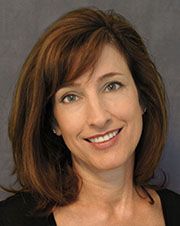A Watershed Moment for Critical Zone Geophysics
OR
SEG members, view the course for free!
Session 1, Tuesday, May 31, 2022, 3 pm to 4 pm US Central Time
Session 2, Wednesday, Sept. 7, 2022, 10 am to 11 am Beijing Time
SEG Members Free Access Details
Two live sessions are completed. Please scroll down to watch the videos from the recordings below. SEG members, view the course for free!
Abstract
The critical zone is an extremely important veneer of our Earth that influences water resources, agricultural productivity, and the carbon cycle. Hydrogeological, geochemical, and biological processes in the critical zone occur across a range of scales and across bedrock-through-canopy compartments, rendering characterization using traditional methods challenging. Additionally, land-use change, environmental trends, and abrupt disturbances are significantly reshaping interactions within critical zones at a time when population growth and resource-intensive lifestyles are increasingly relying on benefits provided by the Earth’s critical zone.
This presentation will focus on recently developed constructs to conceptualize and tractably quantify hydrobiogeochemical critical zone behaviors using geophysical methods. The constructs include a functional zone approach that uses diverse, remotely sensed datasets to rapidly characterize the organization of a terrestrial system and simultaneous above-and-below ground geophysical monitoring strategies to quantify how terrestrial systems respond to press and pulse disturbances. The constructs will be described using case studies from a Colorado mountainous watershed, an Arctic permafrost ecosystem, and vineyard agriculture sites. The presentation will emphasize how geophysical data combined with emerging technologies (such as low-cost distributed sensors, machine learning, 5G wireless communications, and computational capacity) are starting to reveal their value for greatly enhancing the predictive understanding of critical zone behaviors. With new scientific and technological advances, we now have the opportunity to seize this ‘Watershed Moment’ for accelerating our understanding and management of the Earth’s critical zone.

Your Instructor

Susan Hubbard is the deputy for science and technology at Oak Ridge National Laboratory, where she oversees one of the nation's most extensive portfolios of research and development. Prior to joining Oak Ridge National Laboratory, Susan was the founding associate lab director of the Berkeley Lab’s Earth and Environmental Sciences Area and its environmental geophysics group, a geologist at the U.S. Geological Survey, and a geophysicist in the oil and gas industry.
Susan’s research focuses on quantifying terrestrial system dynamics, with an emphasis on development of geophysical approaches and data integration strategies to provide insights about how hydrological, geochemical, and biological processes interact and influence water availability, water quality, carbon cycling, and agriculture system behaviors. She is a member of the National Academy of Engineering and a Fellow of the American Academy of Arts and Sciences, the American Geophysical Union (AGU), and the Geological Society of America (GSA). She has received the SEG Frank Frischknecht Leadership Award, the SEG Harold Mooney Award, the American Institute of Hydrology Robert G. Wetzel Award, and the GSA Birdsall Dreiss Distinguished Lecturer Award. She was the founding chair of the AGU Hydrogeophysical Technical Committee and is currently the Chair of the Hydrosphere and Atmosphere Section of the American Association for the Advancement of Science (AAAS). Susan earned her PhD in civil and environmental engineering at UC Berkeley, her masters in geophysics at Virginia Tech, and her bachelor’s in geology at UC Santa Barbara.
